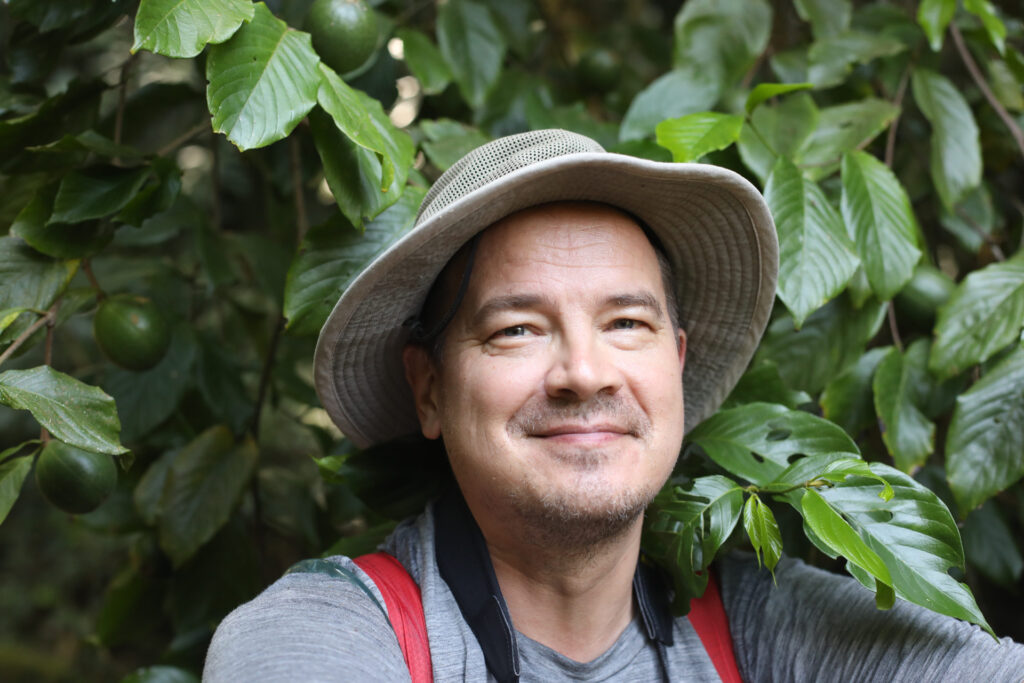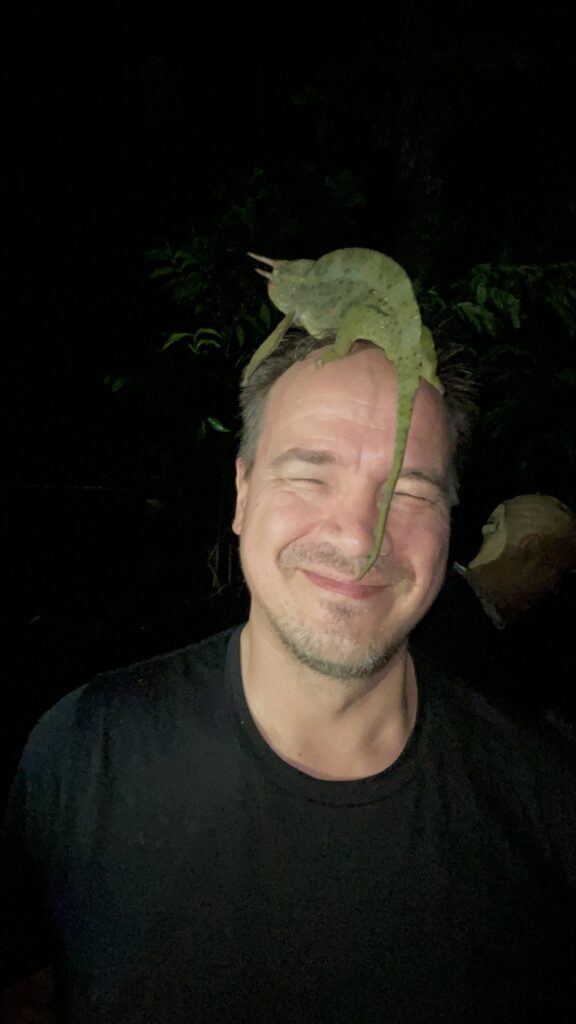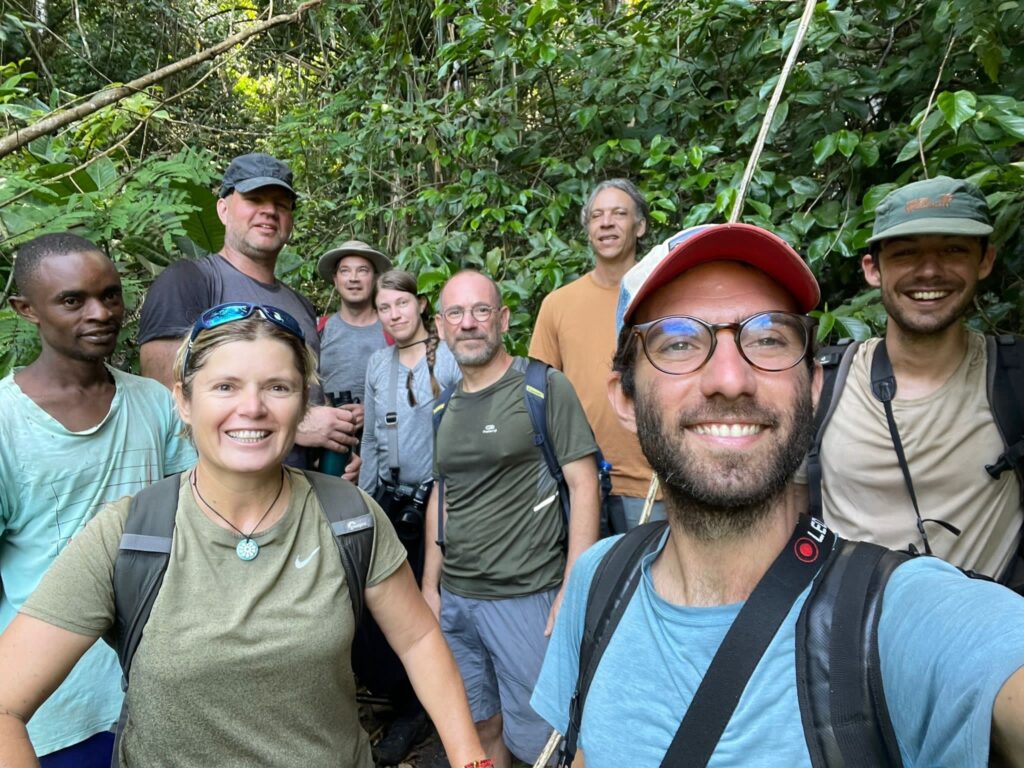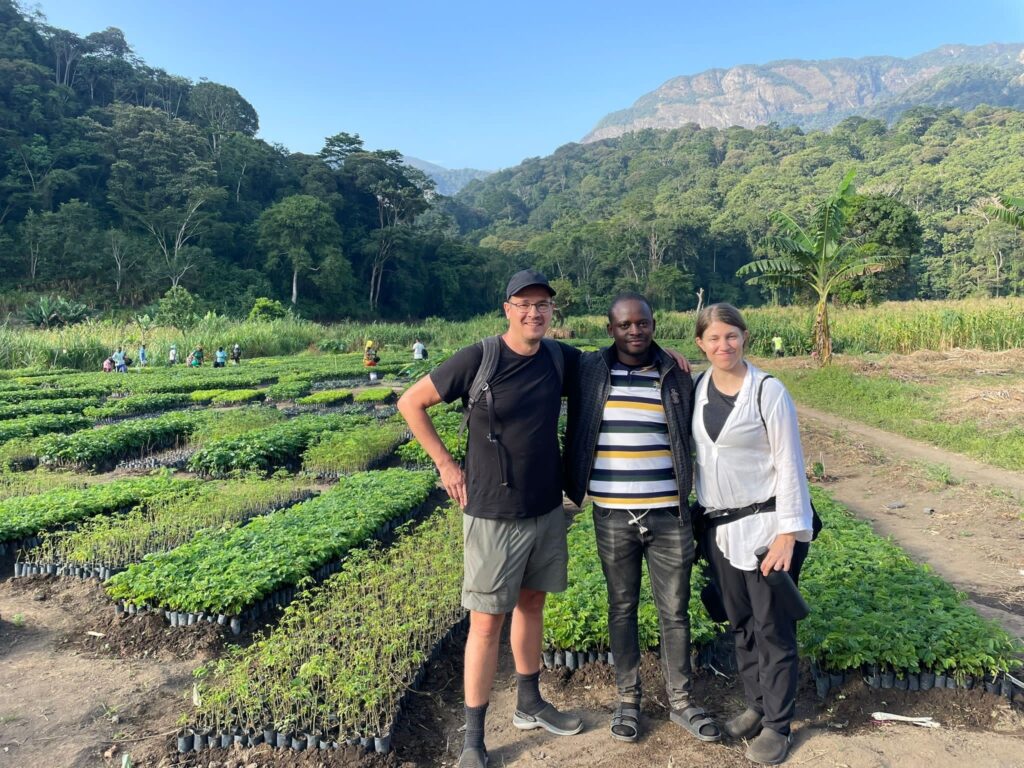Only five years ago, my life was on a different trajectory. I was a tech entrepreneur, deep into the relentless rush of Hong Kong, constantly exploring the cutting edge of mobile tech and blockchain. With over 200 days a year spent on the move, my life was a whirlwind, constantly chasing the next opportunity. Conservation and deforestation were on my radar, but as distant blips, abstract issues disconnected from my daily life.
Then, a business trip landed me in Africa, and everything changed. I was there for work, but I encountered a startling new passion. Suddenly, I was face to face with the raw power and majesty of nature, elephants, hippos, and rhinos roaming free. I was struck by the diversity and richness of life there. I found myself addicted to this land, its beauty, and its struggle. While away, I longed for Africa, yearning for its wild landscapes and complex challenges. The call was so strong that it sparked a transition from a techie entrepreneur to what I now term a 'nature entrepreneur.'

On my Africa travels, I quite soon learned the other side, a dark side to this breathtaking panorama. The brutal reality of poaching had driven rhinos to the edge of extinction and cut elephant herds to mere fractions of their former glory. This stark contrast was impossible to ignore. During one of my trips, I came across Lawrence Anthony's book, "The Elephant Whisperer." This remarkable chronicle not only revealed a deeper understanding of the remarkable intelligence of elephants but also shed light on the pervasive poaching crisis. It was a revelation to me that the massacre wasn't just orchestrated by large criminal organizations. Often, local communities found themselves ensnared in the final stages of this brutal trade. An idea began forming in my mind: could we change the narrative and give these communities a positive incentive to protect their environment?
Fuelled by a vision where individuals and companies from across the globe could directly and transparently reward communities for preserving their environment, I knew I needed to find experienced partners to transform this vision into reality. As a newcomer in the conservation world, it wasn't an easy task. After a year-long search, a chance meeting at the Addis Ababa airport led me to the Pams Foundation. A fellow traveler, who happened to be acquainted with this renowned NGO known for its integrity and impressive conservation achievements, not only recommended Pams but also offered to introduce me to the directors, Michele and Krissie. This encounter marked a pivotal moment in my journey. We soon met in Arusha, Tanzania, at the lodge where I now stay a big part of the year, owned by the same woman’s family I met at the Addis Ababa airport.
We found a shared vision and conviction: successful conservation hinges on collaboration with local communities. With this shared belief, our partnership took off in 2018. Together, we developed Myplanet, our first software solution for peer-to-peer donations to conservation projects.

By 2021, we refocused on making a larger impact in forest conservation while continuing to work on Myplanet. In early 2022, my Technology company, Airimpact, in partnership with the Pams Foundation, embarked on our first reforestation project in the Nguru Mountains, home to a unique, 30-million-year-old rainforest.
I still vividly remember my first visit to this ancient rainforest - I celebrated my birthday there. There's no better way to mark another year than being surrounded by the unique wildlife of the rainforest, from endemic chameleons and frogs to towering, 65-meter-high giant trees, all against the enchanting soundtrack of the forest.
We received a warm welcome from the local community, most of whom were small-hold farmers. These farmers cultivated the land that was once part of the rainforest. We proposed an idea to them: turn part of the unused land back into a rainforest, and in return, they would receive compensation for protecting this new forest. They loved the idea and were eager to start the project with us, marking a new and promising chapter in our shared conservation journey

Months of preparation and negotiations with the local community led to the establishment of a nursery for the first 220,000 rainforest tree seedlings, grown from seeds primarily sourced from the neighboring forest. Even with our collective expertise in tropical botany, biodiversity, community negotiations, financing, and business models, setting up the project was no easy walk in the park. Negotiating with over 200 farmers, gathering and storing more than 1,000,000 seeds, establishing a nursery for hundreds of thousands of seedlings, and training the local community to manage it all was an immense challenge. And we needed substantial funding to get the project moving.

Then we hit a formidable wall: the complex world of carbon project certification. This was an intricate labyrinth of protocols, standards, and methodologies, a language all its own, blending certification protocol with legal jargon and methodologies for over 40 different kinds of nature-based projects.
Our saving grace came in the form of a European client. This professional buyer of carbon credits had a keen interest in our unique rainforest reforestation projects. Their guidance proved invaluable, helping us navigate the intricate maze of certification, and assisting us in choosing the right standard, and preparing our initial certification reports.
Today, the project is humming along nicely. We've completed our first planting season, putting down roots for 200,000 trees, and preparations for the next phase are well underway. Yet in the midst of this hard-won success, a sobering realization hit me. If setting up a single nature-based carbon project was this Herculean, how could we hope to scale this to combat deforestation across Africa effectively? I estimated we'd need 5,000 to 10,000 projects the size of our Nguru Mountain initiative to make a significant dent.
It was clear that we needed to think bigger, be bolder. We had to harness the power of technology, innovation, and global cooperation to make a difference truly. This realization sparked the concept of Airimpact, a platform designed to escalate the battle against deforestation.
But that's a story for another day..."
As we embark on this journey, I want to emphasize the importance of individual responsibility and engagement, whether you're a corporate director or a conscientious consumer. It is crucial to examine the carbon-offset projects you choose to support thoroughly. Genuine climate impact requires careful consideration, as purchasing carbon credits is more than a transaction—it's an investment in our collective future. Ensure that your contributions directly benefit projects that deliver tangible, long-lasting impact. Be active in the fight against deforestation, not simply a passive buyer of carbon credits. Your choices can shape a sustainable and thriving future for all.
Get ready for our next blog post, where we'll delve into the heart of Airimpact and our vision for a greener, more resilient Africa. We'll explore the challenges of ensuring and monitoring the real impact of nature-based projects and how Airimpact is revolutionizing the fight against deforestation through innovative technology. Stay tuned as we share our journey and how, together, we can make a difference. See you in the next post!
Ps. Let me know what you think about this blog post. I am eager to learn what you think we should do to protect tropical forests
